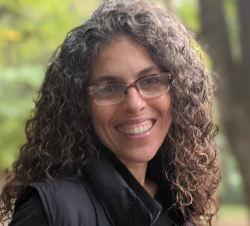Michelle received an NEH Public Scholar award for 2024-2025 to support her research on Chien-Shiung Wu and the history of physics. Michelle also co-edited with Daniela Monaldi, Margriet van der Heijden and Patrick Charbonneau, Women in the History of Quantum Physics: Beyond Knabenphysik (in press with Cambridge University Press and expected to arrive mid-2025).
Michelle Frank

M.A. Student, Biography and Memoir Program, CUNY Graduate Center
The Daughter Particle: Chien-Shiung Wu and Twentieth Century Physics
The Chinese characters for the name Chien-Shiung mean “Strong Hero.” True to her name, Chien-Shiung Wu conducted some of the most startling and historically important physics experiments of the twentieth century. She was a key participant in the Manhattan Project, and in 1949 she was arguably the first to demonstrate entanglement between photons – a phenomenon that Albert Einstein derisively nicknamed, “spooky action at a distance.” Wu’s experiments foretold mysteries of quantum physics. Her scientific ideas prompted transformations in our most fundamental understandings of the atom. But she was unknown outside the physics community until 1956 when her radical experiment disproved parity conservation in beta decay. Then, instead of widespread recognition, Wu was largely erased from public history, starting when the 1957 Nobel Prize went to the two men whose theory Wu proved. My research situates Wu’s science within an international historical and cultural context reflecting early twentieth century Chinese intellectualism, international politics and American social constructions of gender and identity. Lively debate continues today about whether Wu was improperly passed over by the Nobel Committee. The broader question, though, is how cultural and gender expectations of the post-WWII era, and beyond, continue to obscure the story of this twentieth century physicist’s extraordinary contributions.
Updates
Michelle published an article about Chien-Shiung Wu in the April issue of Scientific American.